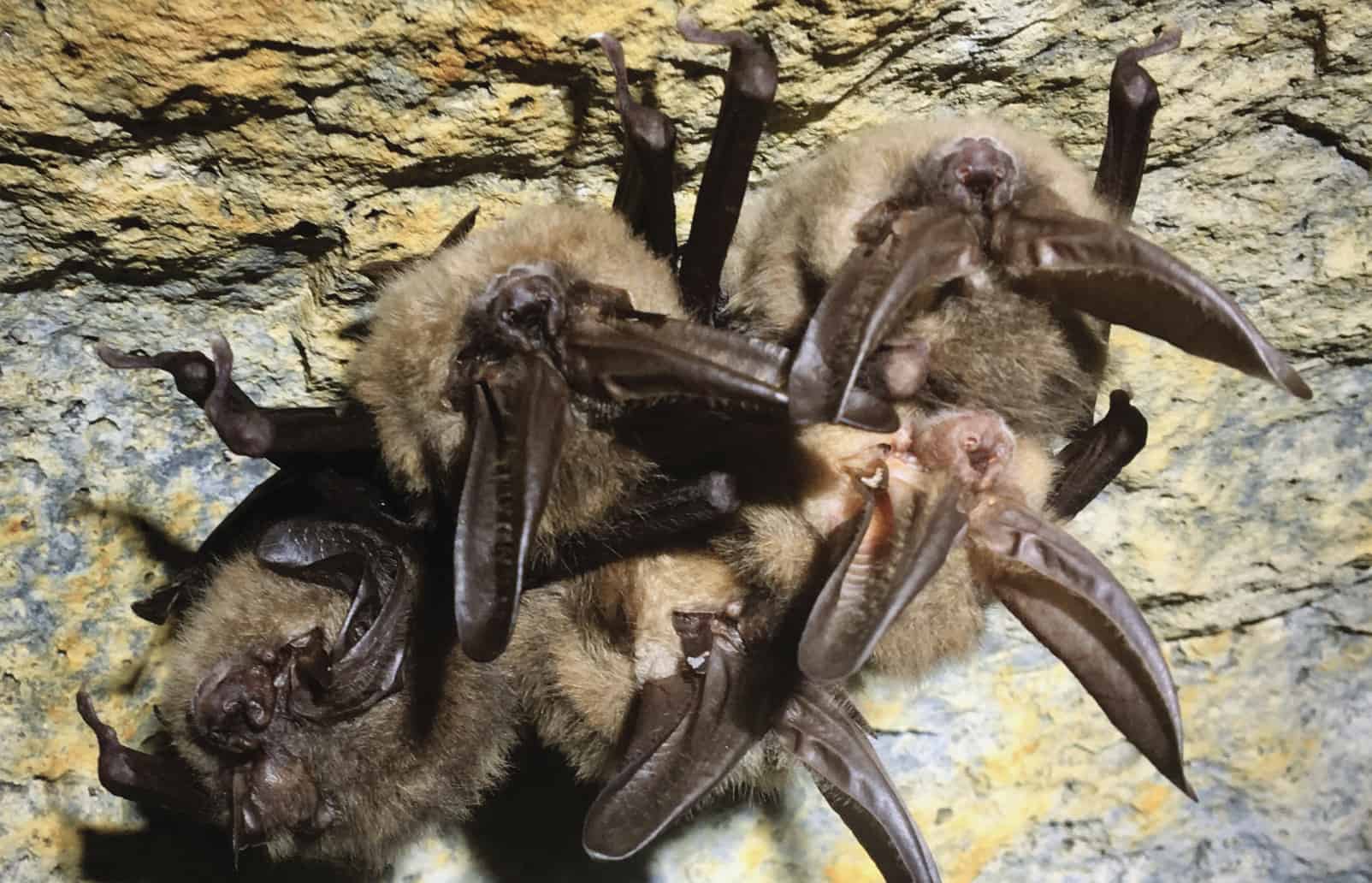Share this article
Male Indiana bats’ roost preferences revealed
Federally endangered Indiana bats need to find the best trees to roost in during the fall in order to maximize their weight gain and survive winter hibernation.
In a recent study published in the Wildlife Society Bulletin, researchers looked at the males’ roosting preferences during the fall when they build their fat reserves before hibernating in caves. Females usually begin their winter hibernation with a larger body mass and more stored fat compared to males. “Characteristics of roosts can help or hinder their ability to go into different levels of torpor which is used to conserve their energy,” said Roger Perry, a research wildlife biologist in the southern research station of U.S. Forest Service and lead author of the study. “When they go into torpor, their body temperatures drop to whatever the surrounding temperature is. They pretty much flip the switch and become a cold-blooded lizard to save energy. The cooler it is, the more energy they can save.”
As part of the study, Arkansas State University graduate student and co-author of the study Steve Brandebura put radiotransmitters on Indiana bats (Myotis sodalis) and tracked them to the roosts that the bats chose. They took note of location and what type of trees and forest stands bats were using.
The team found that the bats used 14 different species of trees for roosting, but preferred pine snags and shagbark hickories. “This wasn’t real surprising,” Perry said. “In this part of the world, pine snag bark peels off in big sheets and a lot of species like to roost under the bark.”
The team also found the bats were roosting in wide ranges of tree sizes, but preferred trees that were over 20 centimeters in diameter. They also preferred to roost in mature forest stands and 98 percent of roosts they chose were in stands that were over 38 years old. Roosts were even detected in areas that were partially harvested and burnt multiple times. “It doesn’t seem that many forest management activities had an adverse effect on them,” he said. “They weren’t avoiding most forest stands, with the exception of young stands, and in one area they actually preferred stands that had been prescribed burned.”
Perry says that managers can help protect Indiana bat populations by making sure their preferred roost sites are available near the caves where they mate each fall. White-nose syndrome, a deadly fungus that affects bats, has been causing the Indiana bat population to steadily decline since it showed up in the U.S. about a decade ago. Making sure that the trees and snags the bats need to roost in are available can be helpful in their conservation especially with this dangerous disease present, he says.
Header Image: An Indiana bat roosting under pine snag bark. ©Steve Brandebura








